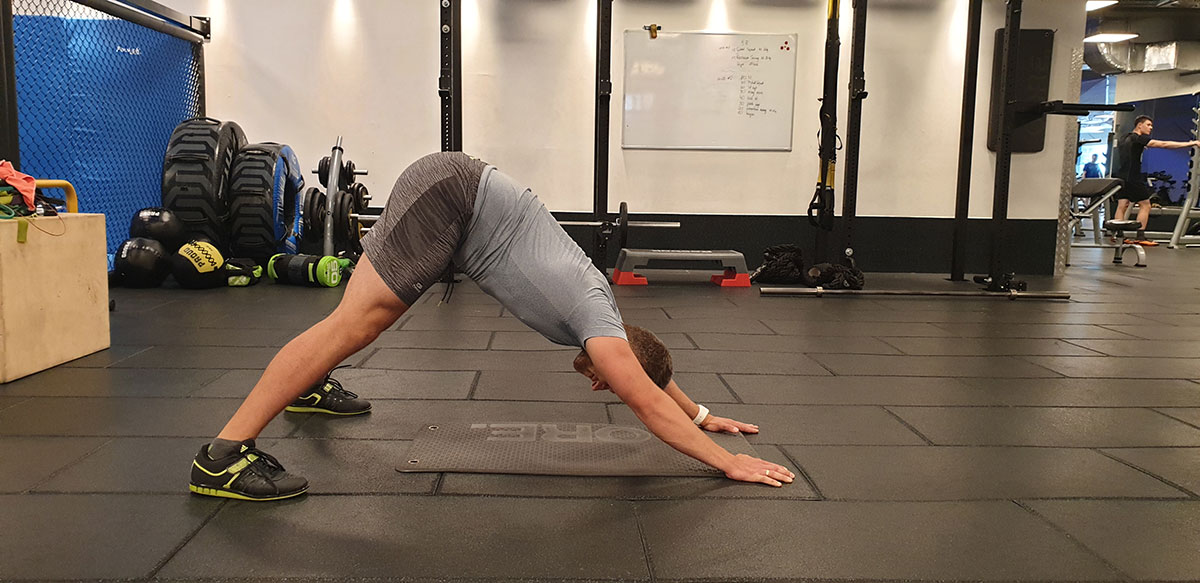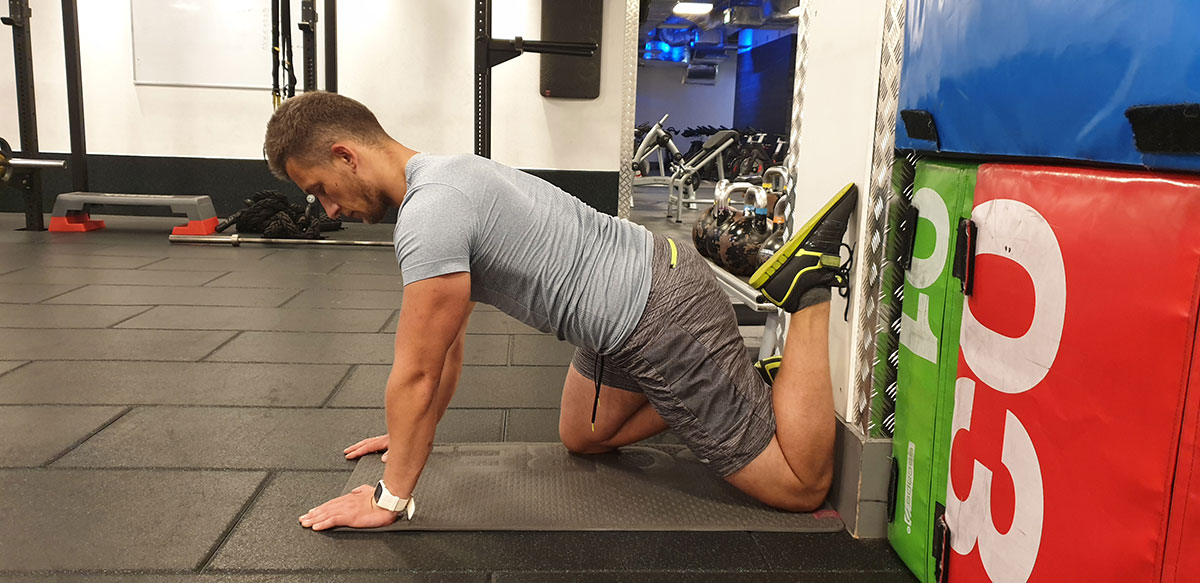1. Introduction to Stretching for Cyclists
Stretching for cyclists is one of the most neglected elements of physical activity. Did you experience muscle stiffness and muscle pain after many hours of driving? Riding a bike will keep you in one position, which can lead to a reduction in muscle fibers. This is because your body has the ability to adapt to the conditions in which you put it. To avoid the unpleasant consequences of being in one position, it is worth reaching for stretching exercises.
Then how to stretch? This depends on whether you are in the warm-up phase before riding a bike or just descending from your machine after many kilometers of riding. In both cases, you can take advantage of the benefits of these exercises. However, with dynamic and static stretching, you need to know when you should use the type of exercise so that it will help you and not be harmful. Improper use of these exercises can lead to a reduction in muscle potential and worse sports results, and even injury. However, proper stretching will allow you to use your potential, thanks to them you will get a more aerodynamic posture and you will be able to enjoy cycling longer.
2. Stretching for Cyclists Before Cycling
Before taking up an activity, it is most important to raise body temperature, stimulate joints and prepare muscles for the effort to use their full potential. As you can see, static stretching does not meet any of these conditions. Because by freezing for a moment in one position, you are cooling your body rather than stimulating it to intense activity. So, before taking up any activity, the best option is dynamic stretching, i.e. stretching the muscles for a few seconds performed on a repeated basis in order to increase joint mobility, warm up the body and properly prepare muscles for cycling. Focus on multi-joint movements that will mobilize your entire body to work.
Below I have prepared for you a proposal of 3 exercises that will prepare you well for the next bike training and it is worth to add them to your warm-up routine. Thanks to them you will reduce the risk of injury during activity and take your workouts to a higher level.
2.1 Upward dog – Downward dog
You start with the front support, then lower your hips to the ground as far as possible while lifting your head up. Then you lift your hips up keeping your legs straight and your heels pressed against the floor, your torso remains straight, you try to push your shoulders towards the ground as much as possible – your head remains in the spine extension. Repeat the whole thing 10-15 times, then move on to the next exercise.
2.2 Spider-man touch and reach
The position from which you start is that of the forefoot with your foot next to your hand, holding it throughout the exercise. Your task will be to elbow closer to the ground and reach your hand as far back as possible – your head keeps following your hand with your eyes. You do the whole thing 10-15 times on one side, afterward, you go to the last exercise.
2.3 Lunge with hamstring stretch
The starting position is the same as in the above exercise. It differs from your task because in this case, you have to try to straighten the leg for a few seconds. You repeat the whole thing 10-15 times on one page, after doing these exercises you will be well prepared for cycling training.



3. Stretching for Cyclists After Cycling
After many hours of riding, it is important that you first cool down a little and let your body recover, and then perform a calming static stretching exercises. This will calm the nervous system and return the muscles to their natural length. Do these exercises by holding the position for at least 30 seconds or more, otherwise, they will not work. This is because at the beginning the Muscles defend themselves against stretching, so for the first few seconds you do not lengthen the shrunken muscles at all. Only after about 30 seconds you start to have a proper effect on your muscles, you can hold your position calmly even up to a minute on the most working muscle groups, e.g. quadriceps.
3.1 Stretching of quadriceps thigh muscles
Your quads are very strong, but if they become stiff and you feel a limited range of movement, then not all muscle fibers work properly and you don’t pedal most effectively. To prevent this from happening, stretch your quads in kneeling – you’ll need something soft under your knee and wall, but the effects of stretching are far beyond other techniques. You start by kneeling supported in front of the wall, moving one leg to the wall with your fingers facing up (the closer the knee is to the wall, the more muscle will be stretched). The opposite leg you put next to the hand in the step and try to lift the trunk to an upright position while holding this position try to tighten the buttock, the best results will be obtained if you hold this position 1-2 minutes per leg. If you find it hard to hold a position, you can support yourself with a stick. When you have finished the exercise, slowly exit the position and switch sides. Moving too fast after prolonged stretching can lead to injury, and in this phase of training, hurrying can only hurt. Focus on slow breathing and try to relax as much as possible.
3.2 Stretching hamstrings
If your thigh’s back muscles are properly stretched, it will be easier for you to hold your pelvis at a natural angle, allowing you to take a more aerodynamic position. It also allows you to get more involved in pedaling your strongest muscles – the muscles of the buttocks. You will get the best results in maintaining proper length muscles thanks to PIR stretching. It is based on the use of muscle relaxation during exhalation, you will need a towel or a belt for it. You lie on your back with your legs straight, put a towel/strap/gum on the toes of one leg and lift it until you feel the first pull from the back of your thigh – you stop there and start pushing your fingers lightly on the towel, keeping it tense for 7-10 seconds. After that, you take a deep breath and a long, relaxing exhalation – while exhaling, you try to move your leg towards your abdomen. You repeat the whole thing 3-4 times, remember not to exaggerate with force while pressing your fingers on the towel because it can bring more harm than good, that is, it can even lead to injury. Additionally, make sure that the leg is straight in the knee throughout the whole exercise. If you are unable to do this technique yourself, either consult a specialist or do the same exercise statically by keeping the leg stretched for more than 30 seconds.
3.3 Stretching the muscles of the buttocks and hip flexors
This exercise stretches the muscles of the buttocks and lower back, as well as the muscles of the hips. This is especially important for those who experience cross pain after long or intensive rides. You position yourself on your back, bend your knees up to 90 degrees after which you place the ankle of one of your legs on the knee of the opposite leg. Then you grab under the knee the leg that was left in the starting position and pull it towards the abdomen if you are able to push the opposite knee away with a closer elbow. You hold this position for at least 30 seconds per side.
Now you know that neglecting your muscles inactive people can do a lot of damage. Therefore, never forget to warm up properly and calm down after training, the better you respect your body, the more it will repay you in better sports form and painless movement.


























